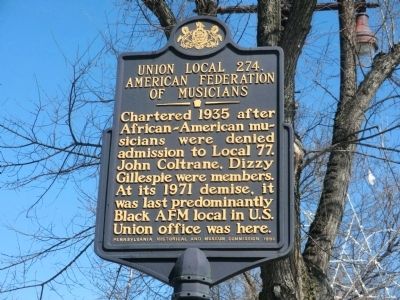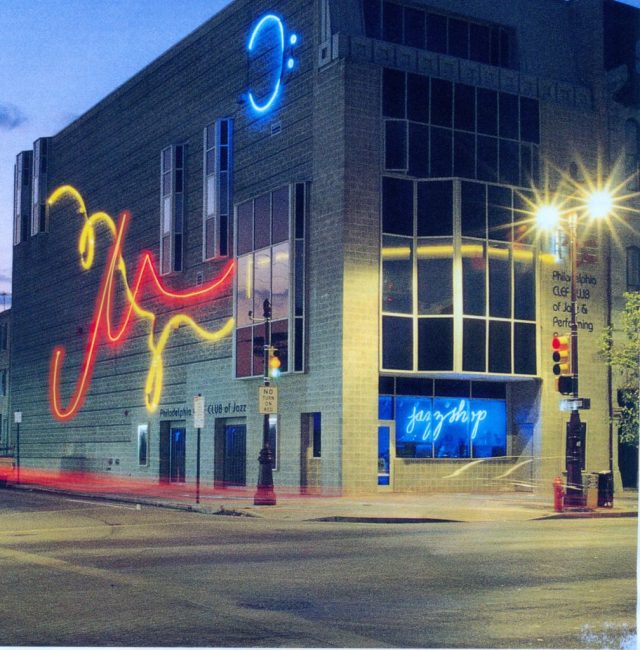Allegro
Forced integration in Philadelphia
A series on the racial history of the AFM
Volume 123, No. 9October, 2023
Local 802’s diversity initiative called the DECIBAL Collective is growing stronger each month (see the Allegro stories “Introducing Local 802’s DECIBAL Collective” and “A Kickoff Event for Diversity at Local 802.”) One of the six working groups that emerged from the formation of the collective is producing a series of Allegro articles on the racial history of the AFM. This will include an examination of the “hyphenated” locals, most of which were the result of the merging of Black and white locals. Welcome to the second article in our series (read our first article here).
 Labor relations among Black and white musicians in Philadelphia during the 1920s and 30s were influenced by broader labor and racial issues of the time, including segregation, discrimination, and economic disparities. The American Federation of Musicians, as an affiliate of the American Federation of Labor, initially mirrored the AFL’s exclusionary practices that limited opportunities for Black workers. While the AFL and AFM didn’t explicitly ban Black members, the local unions were often segregated or exclusionary, either officially or unofficially. This resulted in “dual unionism,” where separate unions existed for Black and white workers within the same industry.
Labor relations among Black and white musicians in Philadelphia during the 1920s and 30s were influenced by broader labor and racial issues of the time, including segregation, discrimination, and economic disparities. The American Federation of Musicians, as an affiliate of the American Federation of Labor, initially mirrored the AFL’s exclusionary practices that limited opportunities for Black workers. While the AFL and AFM didn’t explicitly ban Black members, the local unions were often segregated or exclusionary, either officially or unofficially. This resulted in “dual unionism,” where separate unions existed for Black and white workers within the same industry.
In Philadelphia, Local 77 was the established musicians’ union but was unwelcoming to Black musicians. In 1916, Black Local Branch 591 was formed as a subsidiary to Local 77 specifically to advocate on behalf of Black musicians. Because it was a subsidiary, Local 77 had the power to cancel Local 591’s charter and in 1930 it did just that.
In 1935 Local 274 was formed by Black jazz musicians who felt unwelcome at Local 77 which, like most white locals, only saw value in European style classical music and denigrated Black culture and music. The AFM granted Local 274’s charter making it an independent local, not a subsidiary of Local 77. During its heyday, it represented mostly Black musicians who worked in the many clubs in Philadelphia, riding the wave of the popularity of jazz music. It counted among its members John Coltrane, Lee Morgan, Dizzy Gillespie, Benny Golson, Nina Simone, Jimmy and Percy Heath, Philly Joe Jones, Clara Ward, Bobby Timmons, Shirley Scott, Trudy Pitts and Jimmy Oliver. The local owned a building, had a liquor license and acquired other assets in the course of its advocacy.
A number of white musicians who played jazz and rhythm and blues music joined Local 274 because it was open to covering that work and the musicians who did it. Local 77 was actively dismissive and scornful of these musical forms.
With the passage of the Civil Rights Act of 1964, there began to be pressure on labor unions to desegregate. The AFM, with its segregated locals covering the same industries in the same cities, was considered one of the most segregated international unions of the AFL-CIO and was under enormous pressure by the NAACP and other civil rights organizations to get rid of the legacy of Jim Crow by merging locals in the same cities.
Local 274 President Jimmy Adams, having witnessed Local 208 in Chicago being merged with Local 10 and having all its assets taken over by Local 10, formed a social wing of Local 274 called the Philadelphia Clef Club. In 1966 he transferred all assets — including the building and the liquor license — to the Clef Club.
In 1970, the AFM informed all the “dual locals” that still existed they had until the end of the year to merge. President Adams called a membership meeting of Local 274 and they voted to challenge the edict by the AFM and ask for a hearing to determine the legality of the order.
The irony of this order was that Local 274 was already integrated — about 12 percent of its membership was white and it had never been unwelcoming to any musician of any race. Local 77, on the other hand, was overwhelmingly white and had been actively hostile to Black membership.
The AFM insisted it had the right as the international parent union to require the merger. Local 274 continued to refuse and on March 31, 1971, the AFM canceled Local 274’s charter stating that all of its members should apply for membership at Local 77. Their memberships would be recorded as going back to when they joined Local 274 and they would retain all rights and privileges, including the union’s life insurance benefit.
In May of that year, Local 274 sought an injunction in the U.S. District Court against the revocation of its charter and the forced integration. In June, Judge Edward R. Becker ruled in favor of the AFM and that was the end of Local 274.
President Adams had hoped the Philadelphia Clef Club would continue the work of advocating for Black musicians who were suffering from discrimination and anti-Black bias both in workplaces as well as in the governance of Local 77. But Local 77 sued the Clef Club in an attempt to gain control of the assets of the former Local 274. In a post-mortem win for Local 274, a district court judge ruled in favor of the Clef Club, which retained the assets. (The Clef Club still exists today, in a new location in Philadelphia.)
While the goal of eliminating dual unions was presumably aimed at fostering greater equality, the reality is that institutional inequalities are complex and deeply rooted. In some cases — and certainly in this case — Black musicians may have felt that merging with predominantly white locals would not sufficiently address these complexities and could even exacerbate them by diluting Black voices within the union.
It is crucial to remember and study this history as we consider how to build more equitable institutions today. While we have made significant progress in many respects, understanding the institutional dynamics that perpetuated inequality can help us identify and dismantle similar mechanisms in the present.
Contact the authors of this article: Martha Hyde (mhyde@local802afm.org) and Gregory Riley (gregriley617@gmail.com).

The Philadelphia Clef Club still exists today
List of sources
- http://explorepahistory.com/story.php?storyId=1-9-D&audioId=1-5-39
- https://explorepahistory.com/hmarker.php?markerId=1-A-153
- “Organizing and improvising: A history of Philadelphia’s Black Musicians’ Protective Union Local 274, American Federation of Musicians,” by Diane Dolores Turner, Temple University ProQuest Dissertations Publishing, 1993. 9408829.
Video sources linked below:
https://jazzphiladelphia.org/the-social-stigma-of-the-musician-class/
https://jazzphiladelphia.org/the-explosion-of-philadelphia-jazz-clubs/
https://jazzphiladelphia.org/black-musicians-unite/
